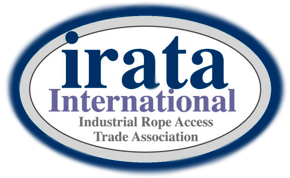

Home
Explaining industrial rope accessWhat is Industrial Rope Access?Industrial Rope Access is a proven method of achieving a safe work position at height or in areas of difficult access. It was initially developed from techniques used in caving to answer the need for a simple, safe and adaptable means of access with its first large scale use being for inspections on the oil and gas platforms of the North Sea. As its value as a work solution grew rope access has also developed onshore where it is to be seen undertaking all manner of work from high-rise window and facade cleaning and general maintenance to repair, geotechnical and inspection work on some of the world's most iconic structures.Through IRATA International - the only worldwide association in the sector - rope access companies have delivered:
The main features of rope access in operation are:
What are falls from height?Many work activities involve working at height. Working from ladders, scaffolds and platforms are obvious examples, but there are many more activities where people are required to work at height. Examples include working on roofs and over tanks, pits and structures. Even changing a ceiling light in an office involves working at heights. Why are falls from height important?Falls from height are responsible for many serious and fatal injuries every year. If you fall from a height above two metres, the likelihood is that you will sustain a serious injury. Who is affected/most at risk of falls from height?Many workers in maintenance and construction, but many other people in a variety of jobs could be at risk of falling from height at work. Examples include painters, decorators and window cleaners and those who undertake one-off jobs without proper training, planning or equipment The main hazards associated with working at height are people falling, and objects falling onto people. These may occur as a result of inadequate edge protection, or poor securing of people or objects in storage. What does the law say?All employers have statutory and common-law obligations in relation to the health and safety of their employees and premises. There are elements of the following legislation that affects falls from height:
Good working at height practiceA risk assessment should be carried out before any work at height is undertaken. The assessment should highlight the measures that must be taken to ensure people are not at risk of falling from height. Consider the type of equipment to be used, much of which needs to handled by a competent person. |
|
Martin Šimík: +421 (0) 908366573
Vladimír Šimík: +421 (0) 948200061
Jozef Breskovec: +421 (0) 944101999
|

